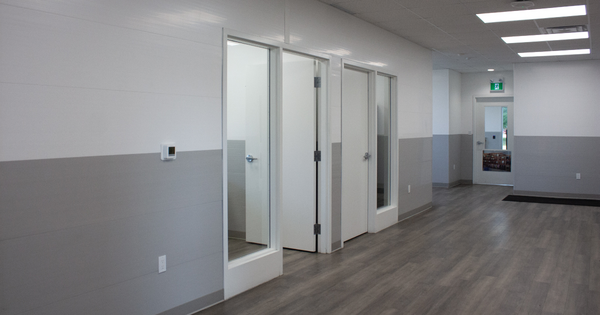In the world of construction, managing costs is a critical aspect of project success. Whether you're a seasoned project manager or a first-time builder, employing cost-cutting strategies can make a significant difference in your project's bottom line.
In this blog post, we'll explore ten effective strategies on how to reduce construction costs.
1. Value Engineering: Maximizing Efficiency Without Sacrificing Quality
Value engineering in construction is a systematic approach to optimizing project costs without compromising quality. Follow these steps to implement it effectively:
- Conduct a Detailed Analysis: Collaborate with architects, engineers, and contractors to create a comprehensive list of project components. Prioritize components based on their impact on functionality, safety, and aesthetics. Explore alternative materials, construction methods, or designs that can deliver the same or enhanced value at a lower cost.
- Collaborate with Experts: Foster open communication channels between different stakeholders, encouraging the exchange of cost-saving ideas. Tap into the expertise of professionals to identify innovative solutions that maintain or improve project quality. Establish a cross-disciplinary team to brainstorm and evaluate value-engineering options.
- Prioritize Value, Not Just Cost: Consider life-cycle costs, including maintenance and operational expenses, when evaluating alternatives. Strive for a balance between upfront costs and long-term benefits to maximize the value of each investment. Communicate the value-driven decision-making process to all team members to ensure alignment.
2. Competitive Bidding: Getting the Best Bang for Your Buck
Leveraging competitive bidding can lead to substantial savings. Follow these steps to make the most of this strategy:
- Invite Multiple Bids: Clearly define project specifications and requirements to ensure accurate and comparable bids. Reach out to a diverse pool of contractors and suppliers to encourage competitive pricing. Use online platforms and local industry networks to expand your reach and connect with potential bidders.
- Evaluate Proposals Thoroughly: Look beyond the bottom line and assess the overall reputation and experience of contractors. Check references and past projects to gauge reliability and the ability to meet quality standards. Include penalty clauses in contracts to incentivize timely completion and adherence to specifications.
- Negotiate Wisely: Use the competitive landscape to negotiate favorable terms, including pricing, delivery schedules, and payment terms. Be open to negotiations that benefit both parties, fostering a collaborative and positive working relationship. Clearly communicate expectations and deliverables to avoid misunderstandings during the construction phase.

3. Project Planning and Management: The Backbone of Cost Control
Efficient project planning and management can prevent costly delays and ensure a smooth construction process:
- Develop a Detailed Plan: Break down the project into phases with clear milestones, deadlines, and deliverables. Identify critical paths and potential bottlenecks to proactively address issues before they impact the timeline. Use project management software to create a centralized hub for communication and documentation.
- Regularly Monitor Progress: Implement regular progress meetings to assess the project's status and address any emerging challenges. Use Key Performance Indicators (KPIs) to track performance against the project plan. Foster a culture of accountability, encouraging team members to report delays or issues promptly.
- Implement Lean Construction Practices: Analyze workflows to identify and eliminate inefficiencies. Use lean principles to optimize resource utilization, minimize waste, and improve overall project efficiency. Foster a collaborative environment where all team members contribute to continuous improvement.

4. Bulk Purchasing: Saving Big on Construction Materials
Buying materials in bulk is a classic yet effective strategy for buying cost-effective building materials. Maximize your savings with these steps:
- Identify Bulk Opportunities: Work closely with the project team to identify materials with a consistent demand throughout the project. Assess storage capabilities and project timelines to determine the optimal quantities for bulk purchases. Consider establishing long-term relationships with suppliers to secure favorable pricing.
- Negotiate Volume Discounts: Clearly communicate your intention to make bulk purchases to suppliers and negotiate volume discounts. Explore the possibility of consolidating purchases with other projects to enhance buying power. Monitor market trends and commodity prices to time bulk purchases strategically.
- Coordinate Deliveries: Develop a delivery schedule that aligns with the project's timeline, minimizing storage costs. Communicate closely with suppliers to ensure timely and efficient deliveries. Consider just-in-time inventory management to reduce the need for on-site storage.
5. Energy Efficiency: Investing Today, Saving Tomorrow
Investing in energy-efficient materials and systems may have upfront costs, but the long-term savings are worth it:
- Evaluate Energy-Efficient Options: Collaborate with architects and engineers to identify energy-efficient materials and systems. Conduct a cost-benefit analysis to determine the feasibility of investing in energy-efficient options. Explore renewable energy sources, such as solar panels, that may qualify for incentives and tax credits.
- Calculate Long-Term ROI: Consider the return on investment over the expected lifespan of the construction. Factor in energy savings, potential tax incentives, and the overall environmental impact. Educate stakeholders on the long-term benefits of investing in energy-efficient construction.
- Explore Incentives: Research government incentives, grants, and rebates available for energy-efficient construction practices. Collaborate with local utility companies to explore additional incentives or energy-saving programs. Document and track all eligible expenditures to ensure maximum benefits.
6. Reuse and Recycle: Minimizing Waste, Maximizing Savings
Embrace sustainability by reusing materials and recycling construction waste:
- Identify Salvageable Materials: Conduct a thorough inventory of materials from previous projects or demolition sites. Assess the condition and quality of salvaged materials to ensure they meet safety and regulatory standards. Implement a systematic process for cataloging and storing reusable materials.
- Implement Recycling Programs: Partner with local recycling facilities to responsibly dispose of construction waste. Train construction teams on proper waste sorting and disposal procedures. Explore opportunities to collaborate with recycling facilities for mutual benefit.
- Promote a Green Culture: Educate and empower construction teams on the environmental and cost-saving benefits of recycling. Implement a rewards program for teams that consistently adhere to green practices. Showcase successful recycling and reuse initiatives to inspire a culture of sustainability.

7. Labor Management: Balancing Workforce Efficiency and Cost
Optimizing labor resources is crucial for cutting costs without compromising quality:
- Efficient Scheduling: Utilize project management software to optimize worker schedules and task assignments. Implement flexible scheduling to adapt to project demands and timelines. Consider staggered shifts to maximize productivity during critical project phases.
- Cross-Training: Identify key skills required for various tasks and cross-train workers to handle multiple responsibilities. Foster a culture of continuous learning and skill development. Ensure that safety protocols are maintained, and workers are adequately trained for each task.
- Regular Performance Reviews: Implement a regular performance review process to assess worker efficiency and identify areas for improvement. Recognize and reward high-performing individuals or teams to boost morale. Address performance issues promptly to maintain overall project efficiency.

8. Technology and Automation: Building for the Future
Embrace technology and automation to streamline processes and reduce errors:
- Implement Construction Software: Choose construction management software that aligns with the specific needs of your project. Train the project team on the effective use of software tools to enhance collaboration and communication. Regularly update software to leverage the latest features and security enhancements.
- Explore Building Information Modeling (BIM): Collaborate with architects and engineers to implement BIM for accurate project visualization and coordination. Train the project team on BIM principles to facilitate seamless integration into the construction process. Use BIM for clash detection, reducing errors and rework during the construction phase.
- Invest in Smart Construction Equipment: Evaluate the feasibility of using automated or remotely operated construction machinery. Train operators on the safe and efficient use of smart construction equipment. Explore the potential for predictive maintenance to reduce downtime and repair costs.
9. Standardization: Consistency for Cost Savings
Standardizing construction components and methods can simplify processes and reduce costs:
- Develop Standardized Designs: Collaborate with architects and engineers to create standardized templates for common project elements. Document and communicate standardized designs across the project team. Continuously update and refine standardized designs based on project feedback and evolving industry practices.
- Use Common Materials: Identify materials that can be consistently sourced without compromising quality. Develop relationships with reliable suppliers to ensure a steady supply of common materials. Monitor market trends for cost-effective alternatives and adjust standard materials accordingly.
- Training Programs: Implement training programs to familiarize the construction team with standardized methods. Regularly update training materials to reflect the latest industry standards and best practices. Encourage open communication and feedback to address any challenges or improvements needed in standardized processes.
10. Risk Management: Minimizing Financial Surprises
Identifying and mitigating risks early in the project can prevent unexpected costs:
- Risk Assessment: Conduct a thorough risk assessment at the beginning of the project, considering both internal and external factors. Identify potential risks related to weather, supply chain disruptions, regulatory changes, and unforeseen site conditions. Use historical project data to anticipate common risks and develop mitigation strategies.
- Develop Contingency Plans: Establish contingency funds to address unforeseen expenses or delays. Clearly define the conditions under which contingency funds can be accessed. Regularly review and update contingency plans based on evolving project conditions.
- Regular Updates: Schedule regular risk review meetings throughout the project lifecycle. Encourage open communication among project stakeholders to report emerging risks promptly. Use project management software to track and manage risk mitigation strategies.
In conclusion, successfully cutting costs in construction requires a meticulous and strategic approach. By implementing these detailed strategies, you'll not only reduce expenses but also enhance the overall efficiency, sustainability, and success of your construction projects. Building smart isn't just about saving money — it's about creating a foundation for long-term success in the dynamic construction industry. Happy building!






